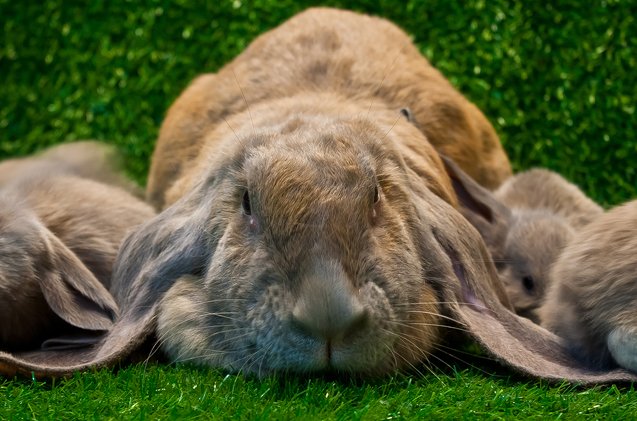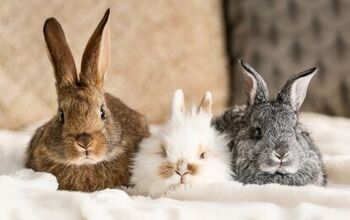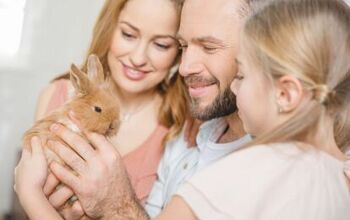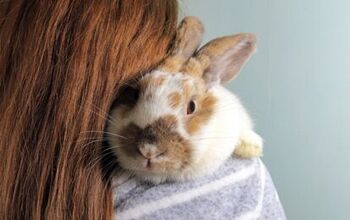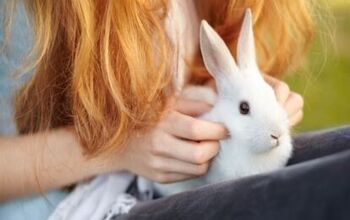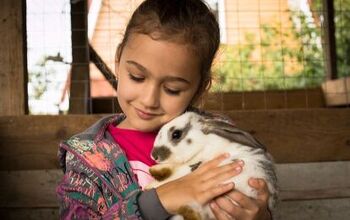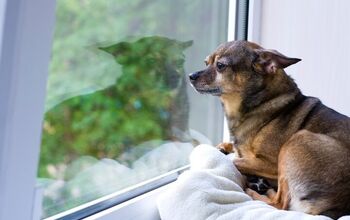English Lop


About English Lop
While some claim that the English Lop first originated in Africa, it is not entirely known where the breed started. However, a variety of them appeared by the mid 1800s in England and soon came over to American soil via trade ships. Back then, breeders resorted to cruel practices such as waxing and stretching the English Lop’s ears to make them longer and more impressionable. Thankfully, this trend has ended and no modern breeder would ever think of harming this precious rabbit simply for looks.
English Lops are popular for two main characteristics: their large, floppy ears and their wonderful personalities.
The English Lop is best known for its long, over-sized ears that fall on either side of its face. The ears are round and should not point at the end. They have large heads with wide-set eyes with a mandolin-shaped body. Their feet should be straight with the front feet not bow-legged or bent and the tail should be straight (not screwed).
An English Lop’s ears should be soft to the touch and coated in soft fur. Their flyback coat is smooth, short and relatively easy to maintain. They don’t need regular grooming (as rabbits tend to groom themselves), however should you find that your rabbit is shedding more than usual, the occasional grooming with a slicker brush should eliminate most of those pesky stray hairs. Under no circumstances should you give your rabbit a bath, as baths make rabbits very anxious and can cause cardiac problems. Should your rabbit be a little dirtier than usual, spot-clean their coat with a damp towel instead.
The English Lop comes in a variety of both solid and broken colors. Their colors include black orange/fawn, agouti/opal, chinchilla (grey), red-eyed-white as well as blue and black torts.
Make sure to take your rabbit out of their enclosure everyday so they can stretch out their muscular legs and hop around.
The English Lop requires a little bit more maintenance in the ear department than most other breeds because they are so long. Their ears should be examined regularly and kept clean of wax buildup and their nails need to be regularly trimmed so in case they step on their own ears, their nails won’t dig into them.
However, they don’t require any more care than usual when it comes to their diet or type of enclosure. Like most rabbits, they require a diet consisting of 70 percent timothy hay the rest being a balance of fruit, vegetables and pellets. Some suggested fruits include pears, kiwi, papaya, mango, pineapple (skin removed), stare fruits, currants and apricots. Some vegetables that most rabbits love to gnaw on every once in a while include broccolini, celery, broccoli (both the leaves and the stems), Brussels sprouts and bell peppers of any color. Your rabbit’s diet should also be made up a healthy some of leafy greens such as Swiss chard, radish tops, spinach and sprouts.
Whether your rabbit’s enclosure is indoor or outdoors, it needs to be cleaned at least once a day to remove their daily droppings. Their bedding should be changed every week or twice a week, depending on how many rabbits you have in one hutch/enclosure. There are many different kinds of bedding available on the market, some of them better in quality than others. Make sure to take the time to read labels and find out which one is best for your particular enclosure and rabbit situation.
English Lops love to play! Make sure to take your rabbit out of their enclosure everyday (even if its just for a few hours) so they can stretch out their muscular legs and hop around. They also enjoy being petted on the head and back, much like a cat, and won’t hesitate to hop over to their caregiver to receive the occasional head pat.
Due to its large ears that drag on the ground, owners must pay particular attention to their ears and make sure they are not hurt, as it can lead to infection. This means clipping their toenails so they don’t accidentally step on their ears and hurt them. Also, never leave a bowl of water outside for your rabbit when the temperature is hovering just over or is under the freezing mark. If the Lop’s ears touch the water, there is a risk of the tips of the ears freezing and consequently tearing. Moreover, this breed of rabbit does better in the heat than in the cold because of their large ears, so always be aware of the weather conditions outside and bring your rabbit indoors should it be to cold for them to handle.
The inside of their ears should also be regularly checked for excess buildup of wax and must be cleaned periodically. Like most other rabbits, they should also have their mouths checked for overgrown teeth, as they do not stop growing when they get older. Rabbits that have a correct balance of hay, fruits and vegetables, however, should have no problem with overgrown teeth.
Due to its large ears that drag on the ground, pay particular attention to your English Lop’s ears.
English Lops are popular for two main characteristics: their large, floppy ears and their wonderful personalities. These rabbits are energetic and curious as small kits (short for ‘kittens’, which is what baby rabbits are called) and their playful nature continues long into their adult lives. They are calm, laid-back rabbits which is why they are so great for families. Whether parents have younger or older children, first-time rabbit parents or long-time pet parents, the English Lop will want nothing more than to spend some quality time with their favorite human family and have some fun while their at it.
They are gentle creatures, which is also great news for first-time pet parents as well as seniors who don’t have the energy to keep up with a bouncing puppy but would still like some companionship once their own children have flown the nest. They are willing to be picked up, petted and have no problem doing the same for strangers.
English Lops do not require much toys, as they aren’t the gnawing type, but they will benefit from having some entertainment from some rabbit-friendly trinkets. These rabbits do not require constant attention, but will enjoy the occasional back scratch and petting from their owners and kids. Most of all, they require plenty of space and time to roam freely either within the house or outside in a fenced yard. They are also known to be intelligent rabbits who will understand the concept of what a litter box is a little faster than most rabbits. This also means that they may be easier to train in terms of tricks and commands as well.
Photo credit: Dennis Harper/Flickr; Diane/Flickr; Heather Pauley

More by Diana Faria



